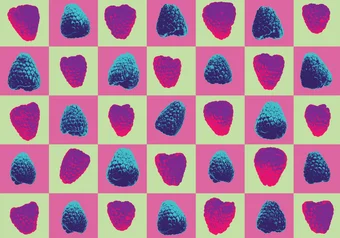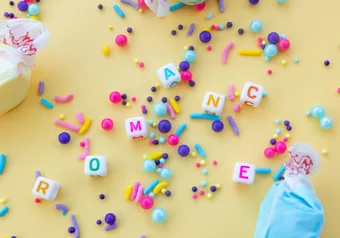The vibrators, condoms and cock rings at your local sex toy store are here for a good time and a long time. But that’s not as fun as it sounds — microplastic particles and silicon shreds from our sex toys will likely still be in landfills in hundreds of years.
The UBC Wellness Centre Sexual Health Shop offers what seems to be another way. The student-staffed sexual supply stand in the Life Building sells a petite green vibrator branded as biodegradable, recyclable and eco-conscious.
According to its label, the Gaia Blush Eco Bullet is made of a hard plant-based plastic synthesized from cornstarch.
I had some questions. As anyone who’s cooked with cornstarch knows, it dissolves in liquid. If your vibrator did that, not only would it be gross, it wouldn’t be body-safe. So, how can a sex toy be biodegradable, durable and hygienic?
To learn more, The Ubyssey looked into how “plant-based plastic” really works — and what that means for the safety of our sex toys.
What are sex toys made of?
Body safety is a critical design feature of sex toys. They shouldn’t leak contaminants, or cause chemical burns or irritation and their designs should avoid porous materials that absorb body fluids (hard to clean!).
Unfortunately, many sex toys don’t reach that goal. Canada and the US don’t regulate sex toy safety, let alone their environmental impact. That leaves it up to the consumer with limited information and options to choose their toys.
Medical-grade silicone is widely regarded as the safest sex toy material. It’s made by superheating quartz sand to produce a flexible rubber. Pure silicone is body-safe since it’s nonreactive to heat and most other chemicals. But it can take centuries to break down in landfills.
Plastics like PVC are another popular choice since they’re often cheaper than silicone. But they’re petroleum-based, meaning they’re made with fossil fuels (not sexy).
PVC plastic toys are also often softened for flexibility and comfort with phthalates — a class of chemicals banned in most children’s toys but for some reason allowed in sex toys. Phthalates are endocrine disruptors that can harm hormonal and reproductive health and leak into waterways to accumulate in ecosystems.
Bioplastics on the other hand are synthesized from starch, cellulose and other compounds extracted from plant matter. They derive flexibility from plasticizers like glycerol.
Bioplastics like those used for a sex toy can break down eventually under the right conditions. But, this specific type of bioplastic is hard and durable enough that its cornstarch component shouldn’t dissolve while you’re using it.
Of course, the most biodegradable sex toy is using none at all and going at it with your hand — but a future without vibrators or dildos, even if it’s an eco-friendly one, isn’t a world many of us want to live in.
Making the 'grade
Dr. Love-Ese Chile is a circular economy specialist who did her PhD in chemistry at UBC in biodegradable polymers. In an email to The Ubyssey, she said it’s a good sign that bioplastics are on the sex toy industry radar.
“These days it is hard to figure out the correct pathway to lower the impact of products and I commend any company taking steps to improve the overall sustainability of their products,” she wrote. “However there are complexities and challenges with using any new material which need to be considered before marketing new products.”
According to Chile, most commercial composting facilities can only handle food and garden waste, not bioplastics. The microbes that break down bioplastics need specific conditions to thrive. Otherwise, the materials might not break down fully, instead releasing methane and contaminants.
“Although many compostable bioplastics are derived from plant sources, this particular product is not accepted into compost operations,” wrote Chile. “You can probably imagine what someone working at the compost facility might think seeing a vibrator in the incoming stream…”
Since sex toys have usually been up close and personal with bodily fluids, they’re technically a biohazard — so many recycling facilities in North America won’t accept them.
More likely, most bioplastic vibrators like the Eco Bullet end up in the same place as their counterparts: the landfill. But without comprehensive life cycle analysis we can’t say for sure, and Gaia, the company that produces the Eco Bullet, did not respond to a request for comment.
What goes around comes around
According to a 2022 Vancouver is Awesome article, the only way to recycle sex toys in Vancouver is to ship them to Toronto, where the Come As You Are Co-operative has an in-house recycling program (which is currently on hiatus).
Even though it takes more than putting a Gaia Blush vibrator in the green bin to get it to biodegrade, it’s not their fault the infrastructure to compost sex toys doesn’t exist yet. Beyond greening individual products and letting consumers vote with their dollars, what could a sustainable and circular sex toy economy look like?
It might look like scaling up local bioplastics composting facilities, as well as e-waste recycling. Seriously regulating sex toy producers to protect both user health and end-of-life environmental safety is also long overdue.
In the meantime, when shopping for a sustainable vibrator, experts recommend prioritizing high-quality products that’ll last — which usually means pure silicone. But, if you’re interested in giving bioplastics a whirl, the Gaia Eco Blush is a relatively affordable option, priced at $17 for the Eco Bullet and $34 for the larger Eco Caress at the Wellness Centre.
"Gaia products ... were introduced to The Shop inventory in response to student inquiries about more sustainable options for sexual health products," wrote Levonne Abshire, Health Equity, Promotion, and Education, in a statement to The Ubyssey. They did not tell me how well they sell.
The choice is in your hands. Hopefully one day, in a world that prioritizes sustainability, safety and pleasure, the options can be better.
Share this article
First online





